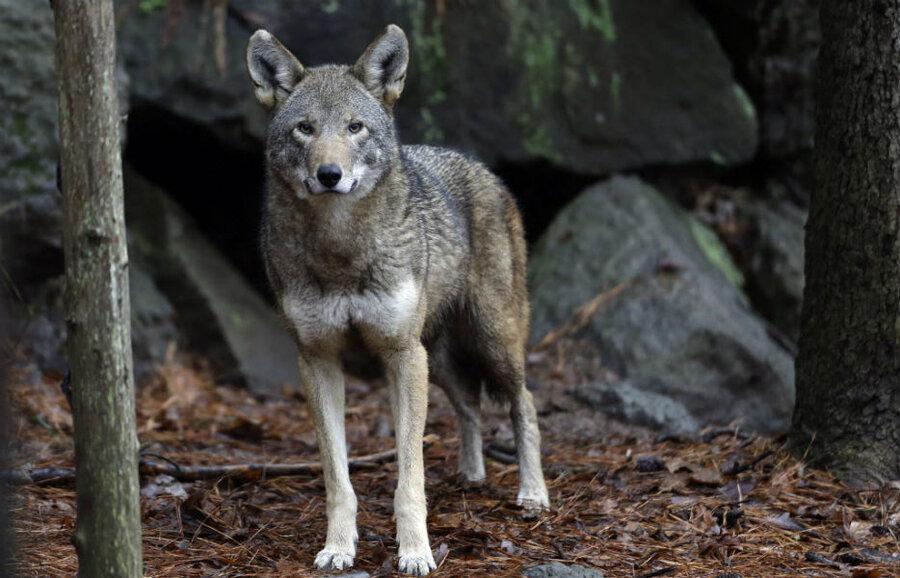What is the best way to save endangered red wolves?
Loading...
After decades of attempting to cultivate a sustainable wild red wolf population, federal officials have opted to shift their efforts to protecting and breeding the animals in captivity.
The US Fish and Wildlife Service announced Monday that it would focus on increasing the population of red wolves in zoos across the country and limiting the number that remain in the wild. Officials hope to double the number of wolves in zoos to 400 – a move that would require removing some wolves from the wild to boost the number of mating pairs to 52 from the current 29.
"We believe the actions we've outlined today chart the correct path to achieve success," Cynthia Dohner, the service's southeast regional director, said in a statement. "We need everyone's help ensure this species is around for future generations. We're on the right road, but we have a great deal of work to do with our state partners, landowners, conservation groups and others. We are looking forward to the collective effort and everyone's engagement."
The service has sought solutions to protect the vulnerable red wolf population, which is native to the southeastern United States, particularly North Carolina, since the animals faced possible extinction 1980s. While the population grew to around 150 wolves, breeding mortality, car crashes, and hunters have led to their numbers to rapidly decline in the past decade, according to The Washington Post.
Monday's decision comes after a two-year evaluation of the red wolf recovery program, which looked at both the captive population and those living in eastern North Carolina as an experimental attempt to keep the animals thriving in the wild, officials said.
But some wildlife conservationists say the plan abandons attempts to keep the wolves alive in the wild, where an estimated 45 remain.
"This is a devastating blow to the world's most endangered wolf," Jamie Rappaport Clark, president of Defenders of Wildlife, told The Hill. "Never before has the US Fish and Wildlife Service so directly turned its back on an endangered species recovery effort."
Others argue that competing interests are at play and that North Carolina landowners and farmers who issued complaints about the presence of wild wolves contributed to the service's decision.
"They're shifting their entire emphasis from trying to create a self-sustaining population to growing the zoo population by up to 400 animals to prevent genetic erosion," Ron Sutherland, a spokesman for the Wildlands Network, told the Post. To him, the move to captivity represents "one big holding pen for red wolves."
But some provisions to keep the animals in the wild remain. Officials with the service say they plan to scope out possible sites where the wolves could be reintroduced to the wild by October of next year.
The service faces an additional hurdle when it comes to protecting red wolves: how exactly to classify them. A debate as to whether or not red wolves are their own species, or a hybrid closely related to coyotes and gray wolves, remains. If red wolves, who have been known to mate with coyotes and gray wolves, aren't considered their own species, they also won't qualify for protection under the Endangered Species Act.
Officials are working to complete a five-year species status review of the wolf by next fall to determine how they will classify the animal moving forward.
Still, the service's promise to evaluate ways to reintroduce and support the wolves in the wild aren't enough for some conservationists.
"The agency is essentially giving up on the red wolves in the wild today, with vague promises of reintroduction efforts elsewhere, sometime in the future," Ms. Rappaport Clark said.







